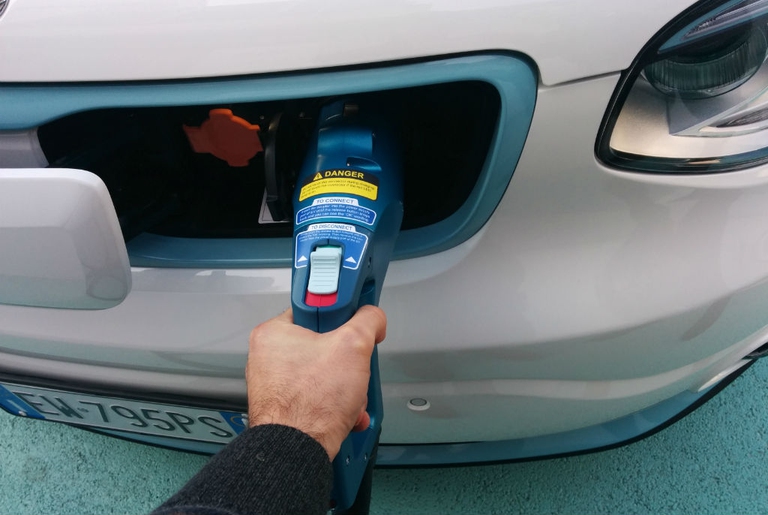
The prototype was developed by two Palestinian 23-year-old students, who self-funded. The car reaches a speed of up to 30 km/h.
Charge points in the country exceeded petrol stations last year. Japanese plug-in drivers are no more afflicted by range anxiety, so electric vehicles are taking off. And now Japan bets on hydrogen cars.
There are about 40,000 electric charging points today in Japan for private and public electric cars compared with 34,000 petrol filling stations. This was revealed in a recent study conducted by Nissan on last year’s data.
The country set an authentic record given the recent introduction of electric car models in the market. But even more importantly, as Nissan’s chief finance officer Joseph G. Peter says: “An important element of the continued market growth is the development of the charging infrastructure”. It is exactly the growth of recharging infrastructure that encourages the spread of electric cars, reducing range anxiety.
This piece of news goes hand in hand with the one on heavy investments by the Japanese Government to develop the charging station network of fuel cell vehicles: 300 stations by 2030. Improved infrastructure will boost sales of So Japan has a wealth of choices on which kind of vehicles and charging infrastructure to bet on.
Siamo anche su WhatsApp. Segui il canale ufficiale LifeGate per restare aggiornata, aggiornato sulle ultime notizie e sulle nostre attività.
![]()
Quest'opera è distribuita con Licenza Creative Commons Attribuzione - Non commerciale - Non opere derivate 4.0 Internazionale.
The prototype was developed by two Palestinian 23-year-old students, who self-funded. The car reaches a speed of up to 30 km/h.
Printed and assembled in a few hours, and then it’s ready to carry up to 12 passengers. The first prototypes of this bus are being tested in the streets of Washington, D.C.
Lexus realises a “driveable” full-scale replica of its saloon with cardboard. And it’s powered by an electric engine.
Milan has announced one of Europe’s most ambitious mobility schemes, known as Strade Aperte (open roads). Its goal is to reduce cars in phase 2 of the lockdown by increasing bike lanes and pedestrian areas.
Formula 1, the world’s most important auto racing championship, has decided to turn the page and aim for carbon neutrality with the support of its teams, drivers and the whole racing circus.
Toyota and LifeGate began telling the story of hybrid mobility back in 2006, now, on the road to the Tokyo 2020 Olympics, they’re still treading the path of sustainable mobility. Here are the main steps of the journey.
Germany’s first solar bicycle lane could be the prototype for the roads of the future. The photovoltaic tiles melt snow and ice, and are capable of absorbing noise.
The figures come from a UK study, carried out by a team of anthropologists, which shows that every family could save over 3,300 euros per year by moving to an electric vehicle. At least in some EU countries. According to data, if a family adopt an electric mobility for its transfers, it could save up
Retrofitting is a technical term which means modifying the technology of an object to improve its performances. Segun Oyeyiola, a Nigerian student of Engineering, just retrofitted an old Volkswagen Beetle and turned it into a solar and wind-powered car. Within a year the final year student managed to convert the Beetle into a








